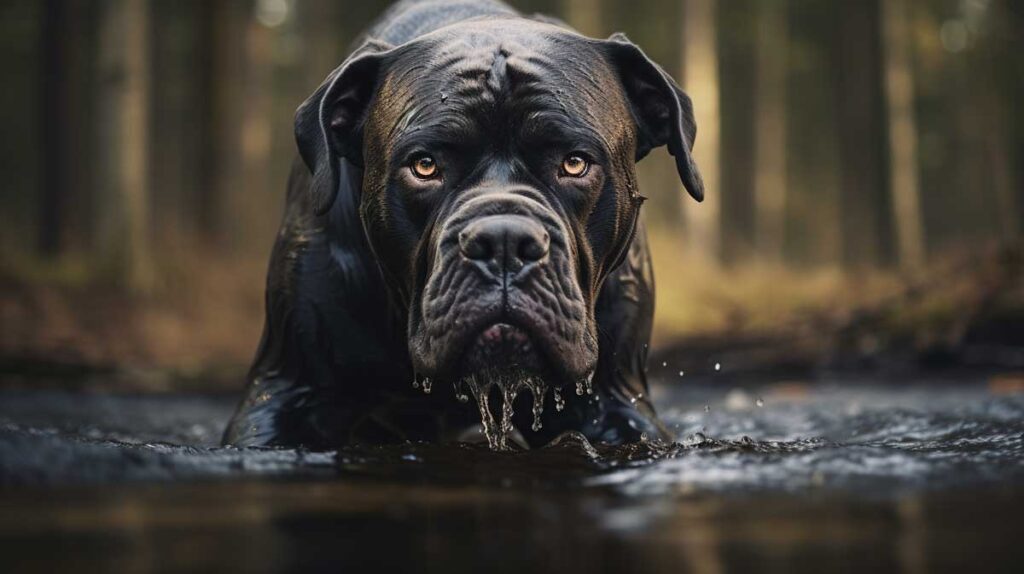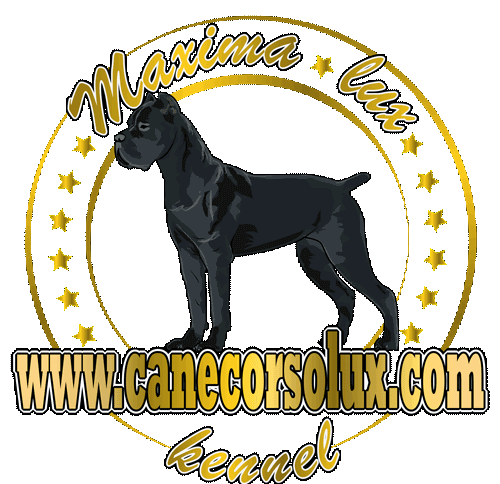If you own a Cane Corso, then you’re probably familiar with its tendency to drool. The slimy coating of slobber is definitely not thrilling to spot so that’s why you need to know how to deal with it, and what triggers the Cane Corso drooling.
What triggers a Cane Corso drooling?
Since Cane Corsos belong to large breeds with floppy jowls, it’s not surprising to see an enormous amount of saliva all over your living place. Unlike other dog breeds with shorter and tighter flews, pooches with long upper lips simply can’t control the drooling. Therefore, let’s discover what causes excess saliva production.
Protection of opponents
Otherwise called hypersalivation, the Cane Corso drooling is also known as ptyalism. The purpose of having big jowls is to serve as protection. It might sound silly, however, since Cane Corsos are often used as family guardians, their long cheeks serve as protection of opponents. Corso is known for its strong bite force, so his floppy cheeks help him have enough maneuvering to bite back.
Excitement
A dog’s happiness, excitement, and panting are the main causes of excessive drooling in Cane Corsos. As we all know, the dog’s mouth is usually opened in those moments, so the saliva goes out. Therefore, dog owners don’t need to be worried to seeing their pets drooling every time they come back home. It’s one of the ways to show you how excited your pet is to know that you’ve arrived home.
Attractive scent
Another reason for Cane Corso’s drooling is the smell. Food activates the senses and prepares the brain for the meal, so when your four-legged friend excessively drools, he probably smells something tasty coming from your kitchen.

When to become concerned about your Cane Corso drooling?
Unusual and smelly drooling can be caused by bacteria and collected tartar and plaque in their teeth. As one of the best solutions for dealing with tartar and plaque is to use dental sticks and chew toys. Dog toys made of durable rubber should help your dog in jaw and teeth strengthening.
A foreign object stuck between teeth is another cause for a Cane Corso drooling. It can also be a small piece of bone, plastic toy, or wood that may cause pain. So, if you spot an unusual slobbering, you’ve got to check your dog’s jaw first.
Anxiety in Cane Corso may occur when your pooch spends plenty of time alone or if he/she hasn’t been properly socialized. Cane Corso’s socialization takes an important part in tailoring your dog’s personality and helps him/her to build a strong and confident temperament.
The third concern for a Cane Corso drooling is overheating. The most common signs of overheating are panting, shaking, drooling, and lethargy. Therefore, you should pay special attention to your Corso’s hydration during summer.
How to deal with your Cane Corso drooling?
You might not do a lot to solve this problem, but you can perform some tricks to keep your house clean.
- Keep your dog’s feeding and drinking bowl outside the house, for example, on the balcony or in your yard. You can also buy an anti-wet mouth bowl to decrease drooling and place it in a specific place in the house.
- Tossing food leftovers from the table might be fun for your pooch, but it is often the biggest culprit for his/ her excessive slobbering. Therefore, try to keep your dog outdoors while having a meal if possible. It might sound cruel, but it will help you clean the house.
- Always have a small towel to clean your dog’s drool before it becomes crusty.






